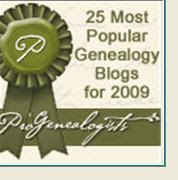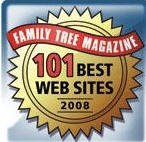The online website of the 19th-century Montefiore Censuses of the Jewish population of the Holy Land, Alexandria, Beirut and Sidon has been launched.
There are five censuses of the Holy Land (including Beirut and Sidon), and one of Alexandria. Currently, the censuses of 1839, 1840 (Alexandria) and 1855 are online. Work continues on the remaining censuses.
The Montefiore Endowment had the censuses scanned in stages.
In 2008, it commissioned the Israel Genealogical Society to transcribe them into a modern Hebrew font, transliterate names and translate data into English. IGS genealogists Mathilde Tagger, Rose Feldman and Billie Stein are in charge. The project is being conducted by teams of dedicated volunteers with good language skills and knowledge of Hebrew scripts.
For more information and to search the database, click here. It can be searched in English or Hebrew, making it accessible to linguistically-challenged researchers. Each entry is linked to the original scans permitting researchers to view the transcribed Hebrew and English in addition to the original document. Families are cross-referenced where relevant.
BACKGROUND
These censuses were compiled by Sir Moses Montefiore during his visits to the area, 1839-1875. between the years 1839 and 1875. Recorded details include personal and family information, occupations, countries of origin, and surveys of Jewish religious institutions. Together, this database is a unique sociological and genealogical record of Jewish life in the area at a specific time.
Montefiore Endowment chair Lucien Gubbay said “The censuses are unusually comprehensive as it is estimated that fewer than 1% of the Jewish inhabitants of Eretz Israel refused to participate because of religious scruples.”
Sir Moses had undertaken to distribute charitable funds collected throughout the world, together with money of his own, to the Jewish poor. Each applicant received a gift of coins (Spanish dollars), according to a fixed scale, from Sir Moses himself. The documents indicate that almost all members of each community participated, not just the poorer ones.
The handwritten manuscripts, in a variety of scripts, belong to the Endowment and can be seen by appointment at its London library. Many entries are difficult to read and - without an index - lacking an index - tracing of individuals is very difficult.
Each entry is linked to the original scans giving the user ability to see not only the transcribed Hebrew and English script but the original document as well. Cross references are also used to link one family with another where relevant.
In all, there are 5 censuses of the Holy Land (including Beirut and Sidon), and one of Alexandria. At present, the censuses of 1839, 1840 (Alexandria) and 1855 are on line. Work is continuing on the remaining censuses.
Montefiore's census of 1839 is probably the first head count of the Jewish population in Eretz Israel since biblical times. He sent standardized forms for information collection but not all the registrars used them. Thus information varies from town to town and community to community. Other censuses were conducted in 1849, 1855, 1866 and 1875, with Alexandria in 1840.
DATABASE INFORMATION
Every adult and child mentioned - even without a name - is listed individually. Parents, if known, were added to the child's listing.
To read more about the various fields and explanations, click the IGS link above. There are notes on orphans, widows, sages and leaders of communities, abbreviations used as surnames, spelling, various languages and accents. For example, the name Yehuda is spelled at least three ways: יהודה, יהודא, יאודה. Hebrew spellings were kept as the scribe wrote it.
Most Sephardim have surnames, while Ashkenazim rarely do. Names of birthplaces of Sephardim changed little over years, while Ashkenazi birthplaces changed many times, due to historical events.
14 October 2010
Subscribe to:
Post Comments (Atom)







































No comments:
Post a Comment